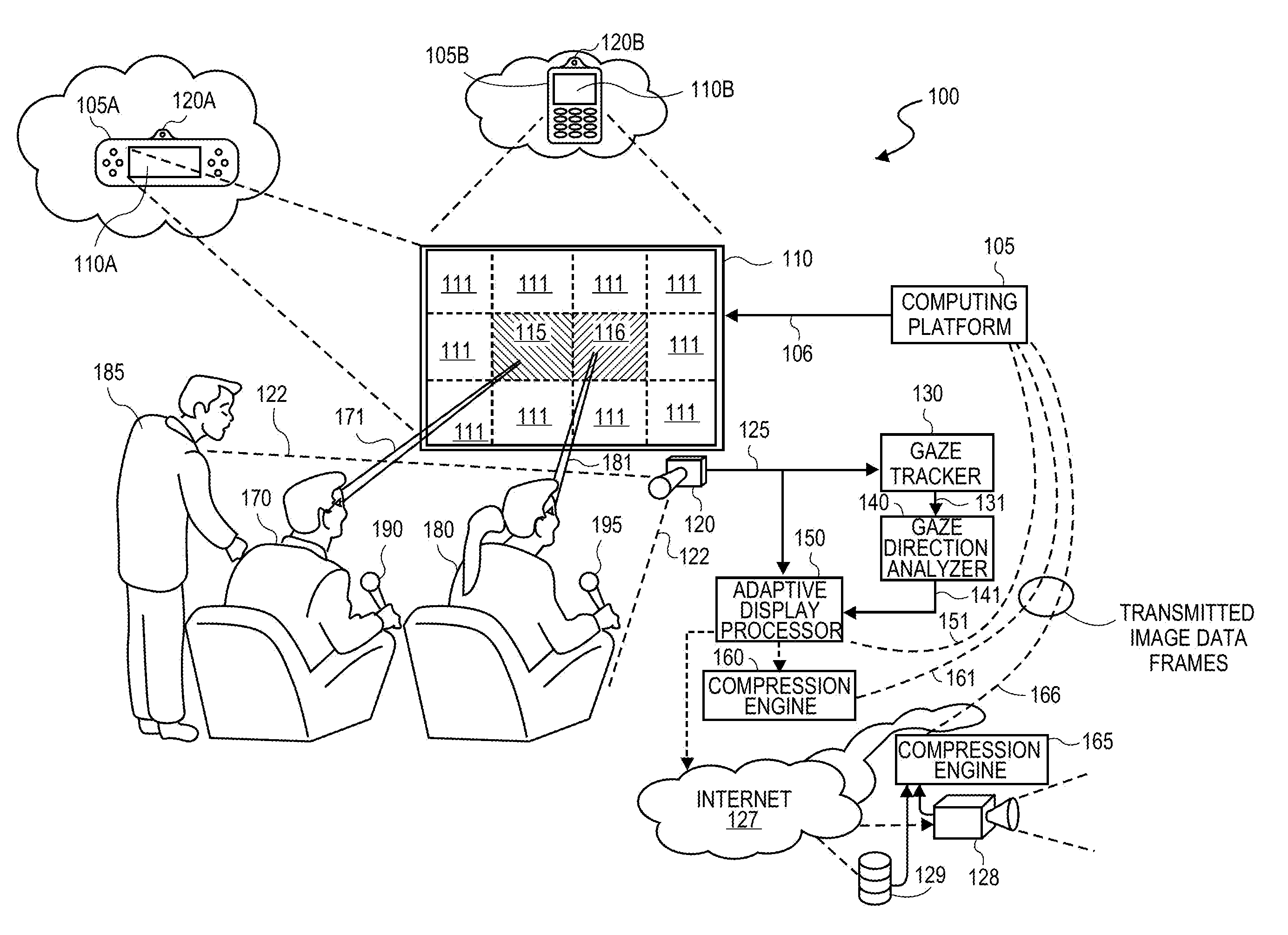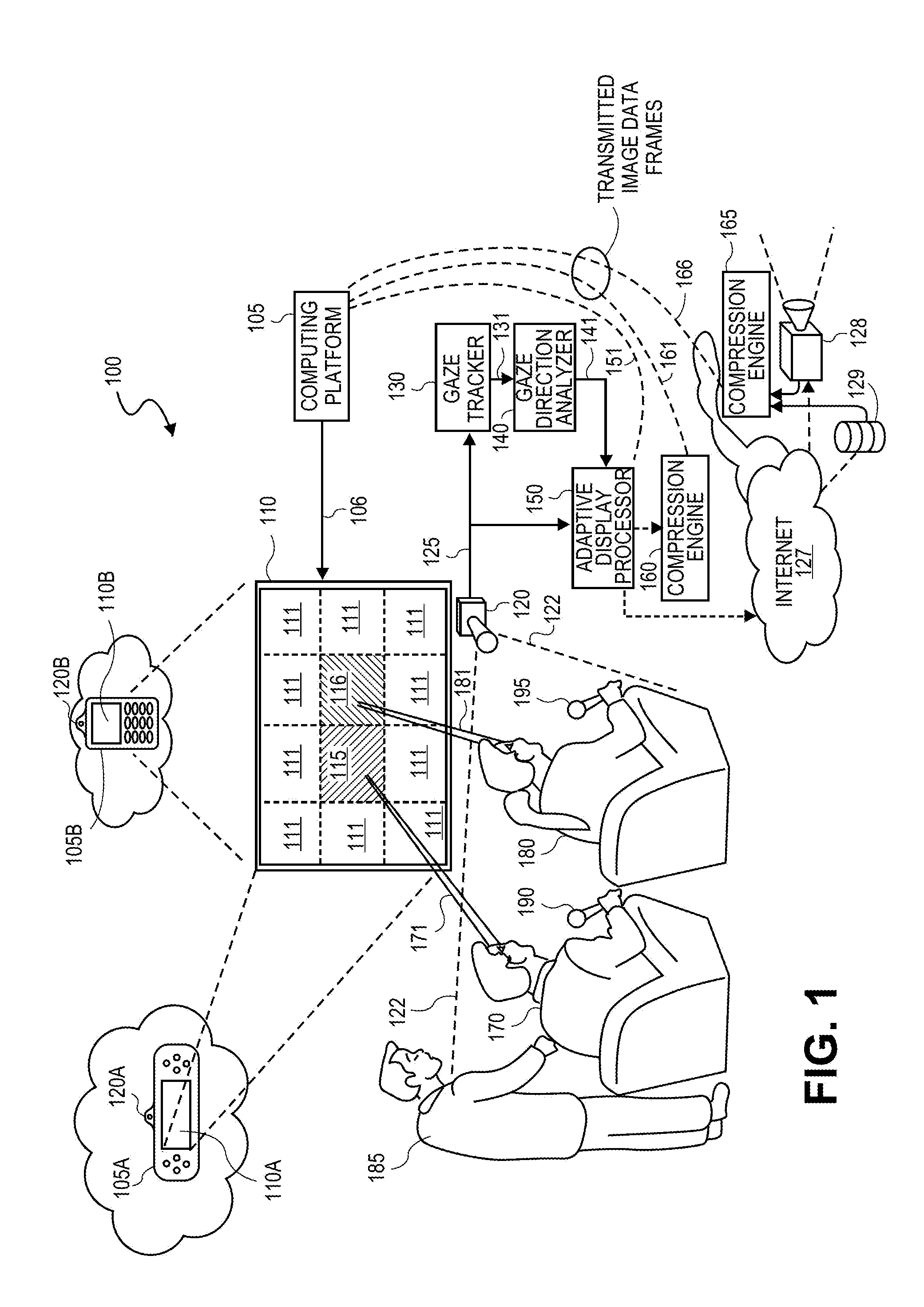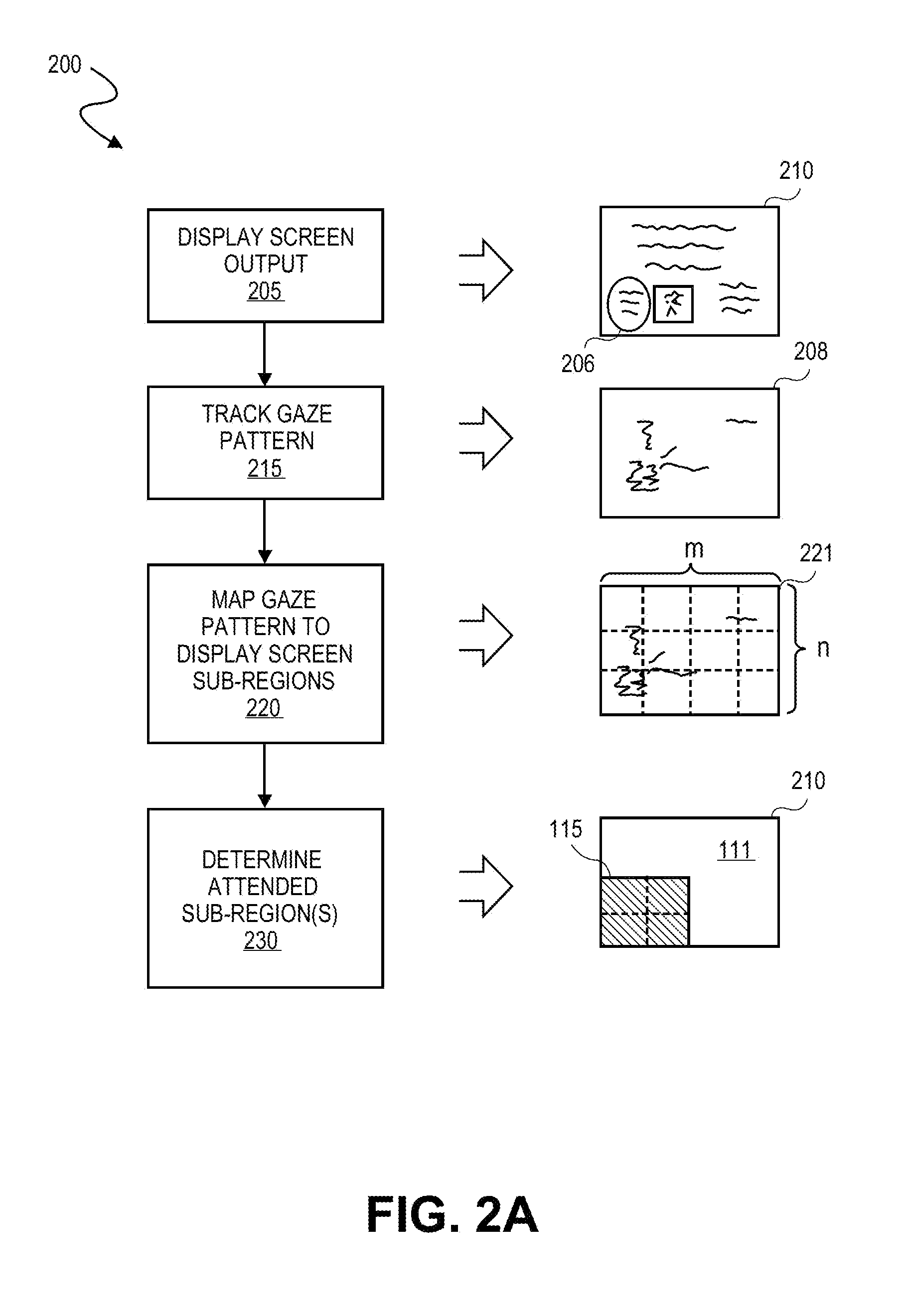Adaptive displays using gaze tracking
a technology of display and gaze, applied in the field of use of gaze tracking, can solve the problems of reducing the quality of video data presented on the display, the usefulness of handheld devices is often limited, and the screen is relatively low
- Summary
- Abstract
- Description
- Claims
- Application Information
AI Technical Summary
Benefits of technology
Problems solved by technology
Method used
Image
Examples
Embodiment Construction
[0015]Described herein are methods and systems for adapting a display screen output based on a display user's attention. Embodiments employ gaze tracking to determine sub-regions of a display screen area which are at a user's focus of attention and adaptively determine the quantities of data provided for attended and unattended sub-regions of the display screen by processing these two groups separately to improve functionality of the application / platform and / or to reduce the bandwidth required to transmit or process collected frames of image data.
[0016]While numerous specific details are set forth in order to provide a thorough understanding of embodiments of the invention, it will be understood by those skilled in the art that other embodiments may be practiced without these specific details. In other instances, well-known methods, procedures, components and circuits have not been described in detail so as not to obscure the present invention. Some portions of the description herei...
PUM
 Login to View More
Login to View More Abstract
Description
Claims
Application Information
 Login to View More
Login to View More - R&D
- Intellectual Property
- Life Sciences
- Materials
- Tech Scout
- Unparalleled Data Quality
- Higher Quality Content
- 60% Fewer Hallucinations
Browse by: Latest US Patents, China's latest patents, Technical Efficacy Thesaurus, Application Domain, Technology Topic, Popular Technical Reports.
© 2025 PatSnap. All rights reserved.Legal|Privacy policy|Modern Slavery Act Transparency Statement|Sitemap|About US| Contact US: help@patsnap.com



